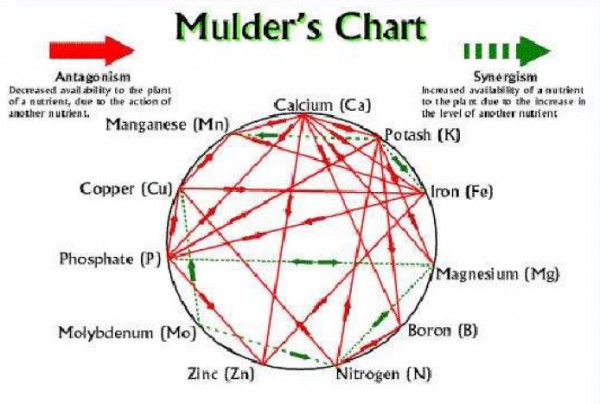
What is the limiting mineral in your soil?

Do you know the phrase 'a chain is only as strong as its weakest link'? True, of course, but do we always remember that when we consider our soil minerals? The weakest link, or the limiting mineral when it comes to soil, determines the capacity of the processes in your soil that together produce your yield.
The strong point of N-xt Fertilizers' fertilisers is that they do NOT behave like a salt in the soil - they have a positive effect on soil life. All natural soil processes are used and the soil can recover. Furthermore, the minerals in N-xt fertilisers ensure they can always be absorbed. They do not mix or intervene in the interactions that take place directly in the soil. N-xt fertilisers bond to the clay-humus complex and then they become part of the soil matter. This is where we see the unique properties of N-xt Fertilizers - to create a balance and/or to restore and to provide the right materials that are needed by the crop at that time.
If you would like to know more about soil minerals,
please contact your Account Manager or put your questions directly to us!

Mulder's Chart
Around the middle of the 20th century, Mr D. Mulder was the first to make a link between all sorts of soil minerals and their interactions. He recorded those in the so-called Soil Mineral Wheel. The wheel is a simple representation of which minerals go well together, the synergists that enhance each other. It also shows the minerals that do not go well together, the antagonists that counteract each other. Above you can see one of the many versions of the wheel. We would like to give a few examples of interactions that we come across frequently in the field.
Interaction between 'limiting' minerals
The red arrow shows that the mineral (where the arrow leaves) produces a reduced availability/absorption because of the property/action of the mineral the arrow points to. This is not necessarily about quantity.
Example: Phosphate (P) has a reduced absorption because of the effects of the mineral calcium (Ca). The same applies the other way around. The availability of nitrogen (N) is affected negatively by potassium (K). Magnesium (Mg) ensures a negative availability of potassium (K).
The green arrow shows that the mineral (where the arrow leaves) becomes more available/is easier to absorb if the mineral the arrow points to is increased.
Example: Potassium (K) is absorbed better when the amount of available iron (Fe) increases. Nitrogen (N) is absorbed better when there is more magnesium (Mg) available. Increasing the available manganese (Mn) creates better absorption of potassium (K). Et cetera
To measure is to know
It is important to know which minerals you have in your soil. You also need to know their ratios in relation to others, as you can see in the Soil Mineral Wheel. A proper and comprehensive analysis of your soil is essential. Why? It is the only way to obtain a clear picture of what your soil really needs.
We have been using fertilisers to add certain minerals to the soil for years, and we believed we were fertilising our crops. However, if you consider the practice from the point of view of the Soil Mineral Wheel that is not the case at all. We are fertilising the soil, not the plants. Interactions take place in the soil and they release the minerals. It is perfectly possible that there is enough of a particular mineral, but that mutual relationships mean more is required, because that is the only way to create availability. Highly complex you may think and that is exactly the reason why we want to help.








